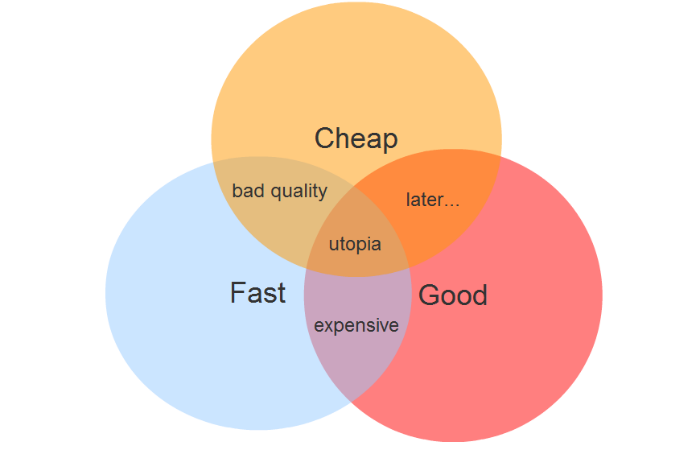How to Define Project Constraints (An Easy Guide for Beginners)

Whether they are successful or fail, in every stage, they come with certain risks and limitations. You only see the outer side of how successful or failure they are. Only those who are stakeholders, project managers, or the people associated closely with the project understand those risks and limitations and how they can damage the whole thing.
You want your project to succeed; again, you wish to elude those risks and limitations. But how to do it so you can hit the center of the bull’s eye with the minimum efforts and get maximum output within the defined budget.
The only solution is by enforcing certain constraints; those will act as guidelines and deciding factors to carry out your project smoothly in every step. If you’re not yet PMP certified, you’re missing many big chunks; check out here the benefits of PMP certification.
This blog will go through a detailed explanation of project constraints and define project constraints even if you’re a beginner. Let’s get started.
Related: 5 Ways Medical Companies are Using Software & Apps
What are Project Constraints?

Project constraints are the limiting factors in a project that has a high impact on quality, delivery, and overall project success. In other words, it limits project portfolio management in particular domains. Anything that puts a limit on the project is project constraints.
There are many advantages and disadvantages to it. Just a general overview of it: you can’t overspend money on a project and expect it to be the best. The correct planning will give you the proper constraints, limiting you to spend unnecessarily and getting the best within the available resources and budget.
Five Project Constraints You Can Consider as the First-Timer:

- Available Resources
- Assigned Budget
- Activity and their Performance
- Time frames
- Results
Agile is all about breaking the project into small chunks, tracking each process, and changing based on the requirements. As PMP started focusing more on Agile, you should never be left behind, and when you break the project down into smaller chunks, it’s easy to have a track.
You’ll find many constraints regarding the project, mostly falling into these five categories and making and keeping it simple so that even beginners as project managers can get kick-started and move in the right direction.
Let’s understand them in much more detail, breaking down the whole thing:
Available Resources:
Your project is incomplete without the right resources. If they are available and within the budget, you must get them in the first place. If not available, what are the best alternatives you can have to them so your project can be successful without spending much on it? So plan everything accordingly.
Including people working under you, what are their strong and weak zones? How good are they at taking on any challenge? Do they need any special training to cope with the present and future days? And tools available for the same. Therefore, it’s safer to have conflict and resolution teams for the same.
Have a track record of everything, so you have everything ready when they are needed using the resource sheet.
Assigned Budget:
Budget is the most crucial thing in the project, and everything solely depends on it. Or you can say it as the amount of money required to invest in getting the desired results. So when you have the allotted budget, being a project manager, your priority is to plan the project accordingly, and it shouldn’t cross the allocated budget.
When you have an accurate plan of spending, you have a baseline to compare and spend throughout the project life cycle. And you can estimate it based on the available and historical data.
In the budget, you can create a cost sheet that lists all the investments you have made and are planning to make.
Activity and their Performance:
When you take up any project and do it as a whole, it might make your things complicated, but when you break it into small chunks, it makes your task simple and effective. It even reduces the workload on team members and helps to understand the whole project minutely.
How should you start and proceed forward? What measures to take for each activity to boost performance? And you can quickly point out where exactly things went wrong and carry expert guidance to fix them.
Therefore, once the activities are over, it’s essential to have a regular track of their performance and find out what tweaks it requires to pull out the best performances.
Time frames:
After taking a project into your hand, you can’t extend its time beyond the set time. If you do that, the project won’t be that effective, and again, negativity will arise besides your name as a project manager.
Therefore, your priority is to finish the project on time, have at least a week for the final check, and work to deliver the project. So if anything goes wrong, you have sufficient time to make it right. And again, if you can’t finish within the allotted time, it will cost you more, or you might even get overspent over the allocated budget.
You can predict the critical path for project duration and finish it within the earliest possible time and the essential way to be on track.
Related: 5 Best Software Solutions All Businesses Need in 2021
Results:
Once you have everything based on the available resources, assigned budget, activity, and performance for each task and their time frame, you should look for the whole thing shouldn’t cross the constraints you have.
Now, it’s time to pace slowly and meaningfully towards the project’s final product keeping goals and objectives in mind. So it never deflects at the end moment on any of the above criteria and keeps everything on track. So your project is successful, and it can boost your confidence as a team.
Final Words
Do you know what makes a project successful? The constraints you have around and the liberty to work with them give you an edge over everything and inch you towards success.
Having so many things in the constraints may confuse you, therefore start with these five and have every detail under them to segregate the whole thing; your project constraints are ready and good to go as a beginner and your first step as a project manager.











